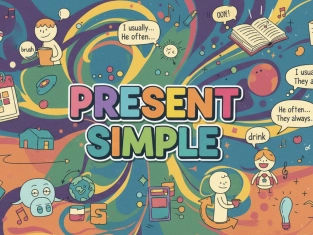Present Continuous
Table of Contents
Exercises
Explanation
How to Form the Present Continuous
The structure is:
Subject + am/is/are + verb-ing
-
I am working.
-
She is reading.
-
They are playing.
Affirmative Form
-
I am eating lunch.
-
He is running in the park.
-
We are studying English.
Negative Form
To make negatives, add not after am/is/are:
-
I am not eating lunch.
-
She is not running in the park.
-
We are not studying English.
Contractions are common:
-
isn’t = is not
-
aren’t = are not
Interrogative (Questions)
Switch the order of am/is/are and the subject:
-
Am I doing this correctly?
-
Is she listening to music?
-
Are they playing football?
When to Use the Present Continuous
Actions happening right now
-
She is talking on the phone.
-
The kids are watching TV.
Actions happening around now (not exact moment)
-
I am reading a great book these days.
-
We are learning Spanish at school.
Future arrangements/plans
-
I am meeting my friends tonight.
-
They are traveling to London next week.
Temporary actions or situations
-
He is staying at his cousin’s house this week.
-
I’m working from home today.
Time Expressions with Present Continuous
Common words that signal Present Continuous:
-
now
-
right now
-
at the moment
-
today
-
this week
-
these days
-
tonight / tomorrow (for future)

